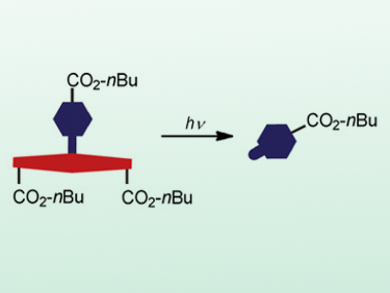Optical control over protein expression could be a valuable tool to control a range of biological processes. One broadly used approach uses caged ligands of the estrogen receptor in combination with nucleic acid-interacting proteins. Photocaged estrogen receptor ligands can exert fine spatial control over the recombination process. However, these methods usually use ultraviolet (UV) or blue light, which hinders their application in tissue.
Martin J. Schnermann, National Cancer Institute, Frederick, MD, USA, and colleagues have chemically optimized a cyanine-caged variant of cyclofen, a ligand of the estrogen receptor. The team connected n-butyl esters to both the payload and the photocage (pictured). These modifications improve cellular uptake. Perhaps more importantly, they also improve retention to provide spatially resolved recombination and expression after irradiation with long-wavelength (near-infrared, NIR) light.
In addition to providing useful molecules for in vivo use, these strategies may have general applications in improving the spatial control of photocaging methods in physiological settings.
- Spatial Control of Inducible Cre-Mediated Recombination by Using Cyanine Photocages,
Alexander P. Gorka, Tsuyoshi Yamamoto, Jianjian Zhu, Martin J. Schnermann,
ChemBioChem 2018.
https://doi.org/10.1002/cbic.201800061




